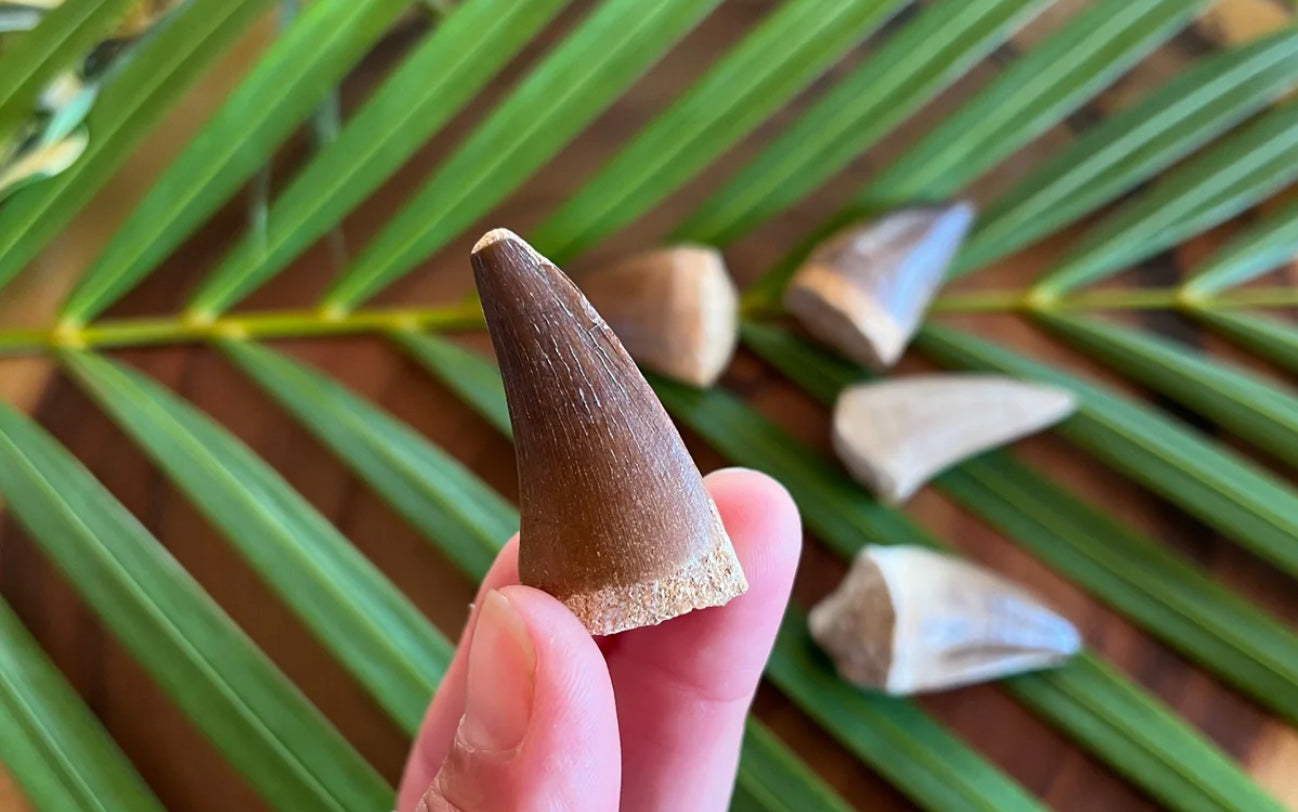
Mosasaurus Fossils: Unlocking Secrets of Prehistoric Seas
The mosasaurus has captivated the scientific community and the public through its remarkable fossils. Unearthed in diverse locations worldwide, these fossils provide a glimpse into the ancient marine world dominated by terrifying reptiles. The study of mosasaurus fossils has enriched our understanding of these ancient giants and shed light on the evolutionary adaptations that allowed them to thrive in the ocean.
What is the Mosasaurus?

The mosasaurus is an extinct group of aquatic lizards that lived around 145 million years ago during the Cretaceous Period. The mosasaur’s teeth made them one of the top predators in the ocean at that time, hunting virtually any marine animal, including:
- Sharks
- Squid
- Fish
- Sea turtles
- Birds
- Cephalopods
What Did the Mosasaurus Look Like?
Mosasaurus marine lizards were gigantic in size, with some growing up to 50 feet in length (about the length of a school bus!). The largest known mosasaur was 56 feet long. It had a long, streamlined body with flippers instead of legs and a powerful tail that helped it move quickly through the water. It is believed that the mosasaur evolved from a land-dwelling lizard and adapted to live in the ocean.
How Did Mosasaur Teeth Help Them?
Mosasaur teeth fossils have taught researchers a ton about these predators and how they were able to kill their prey. They had two rows of teeth on the upper jaw, a primary set of teeth, and a smaller set toward the rear and center of their mouths. The extra sets of mosasaur teeth, called pterygoid teeth, were thought to help them hold and swallow prey whole.
The fossils showed that mosasaur teeth were huge and sharp. Their jaws were also strong and double-hinged, so they could expand to assist with swallowing prey whole, much like a snake.
What is the Difference Between a Mosasaurus and a Dinosaur?

While many people refer to mosasaurs as the “Mosasaurus Dinosaur,” it is important to note that they are not dinosaurs but reptiles. They actually have a closer resemblance to a snake or lizard, particularly the Komodo Dragon, rather than a dinosaur.
When Did the Mosasaurus Go Extinct?
These exotic water creatures went extinct around 66 million years ago when the Chicxulub asteroid impact wiped out several giant reptiles and other animals. The asteroid was around 10 to 15 kilometers in diameter and caused mass devastation when it collided with Earth.
Where was the First Mosasaurus Fossil Discovered?
The first known discovery of a mosasaurus fossil was a skull found at a chalk quarry in the Netherlands in 1764, but it was initially identified as a whale. In 1780, a second skull was found at the same quarry, but it was again misidentified as a prehistoric crocodile fossil. Both skulls caught the attention of many physicians and biologists, but it was not until 1808 that it was determined by Adriaan Gilles Camper and Georges Cuvier that the skull belonged to a marine lizard that they had not yet discovered in modern times.
How Did the Mosasaurus Fossil Get Its Name?
While Camper and Cuvier determined that the found fossil was from an extinct species, it was still undecided what exactly the animal was. That is until 1822 when work by James Parkinson and William Daniel Conybeare coined the name Mosasaurus from the Latin word “Meuse” and the Ancient Greek word “σαῦρος,” which altogether means lizard of the Meuse. This name is in reference to the river where the first mosasaurus fossil was discovered.
Successive Mosasaurus Fossil Findings

Following the initial discovery, there have been many mosasaurus fossils found in a variety of locations, including:
- Europe
- North America (Kansas, South Dakota, and Alabama)
- Africa
The wide range of locations paints a picture of this animal's widespread presence across prehistoric oceans. The fossils vary from mosasaur teeth and bones to nearly complete skeletons.
The Importance of Mosasaurus Fossil Discoveries
Before the discovery of these fossils, the concept of extinction was not widely accepted, so the fossil discovery challenged the previous scientific belief that the only life on Earth was what was currently there. The existence of these creatures provided evidence for the dynamic and ever-changing nature of life on our planet and began the study of extinction. The discovery of other fossils, such as trilobites and megalodon shark teeth, has helped further the understanding of extinction.
Additionally, mosasaurus fossils have largely contributed to our understanding of marine life during the Cretaceous Period. They have revealed a diverse marine environment, dominated by large predators and teaming with life that we were unaware of prior to these discoveries.
Why Do People Buy Mosasaurus Fossils?
Mosasaurus fossils are purchased for a wide variety of reasons. Although we know a lot about the animal, there is always more to be learned. Therefore, many people buy them for research and teaching purposes to gain insight into biology, ecology, and evolution or spread knowledge of the mosasaurus in museums and schools.
Along with using fossils for research, many people also enjoy the art of fossil collecting and are always looking to add new, exciting finds to their collection or to add a unique, natural touch to their home décor. Fossil jewelry is also becoming an increasingly popular way to showcase these historical treasures.
Where Can I Buy a Mosasaurus Fossil?
Mosasaur teeth are tough to come by and are a prized addition for any fossil collector. Whaler’s Locker sells many fossils, including Grade A mosasaur teeth right from Morocco, but they sell out quickly due to their popularity.
Alternatively, you can find fossils for sale from many online retailers if you want to purchase mosasaur teeth or another kind of mosasaurus fossil. Research the type of fossil you are deciding on before purchasing to ensure you are getting a comparable price and quality fossil. Certain signs can help you spot a fake fossil, so make sure you inspect it closely before you buy.
Studying mosasaurus fossils gives us an amazing look into the past, showing us what life was like in ancient oceans. These powerful marine predators had many special features that helped them not only survive but dominate the oceans. Every newly uncovered fossil teaches scientists more about species that existed on Earth long before we did.

